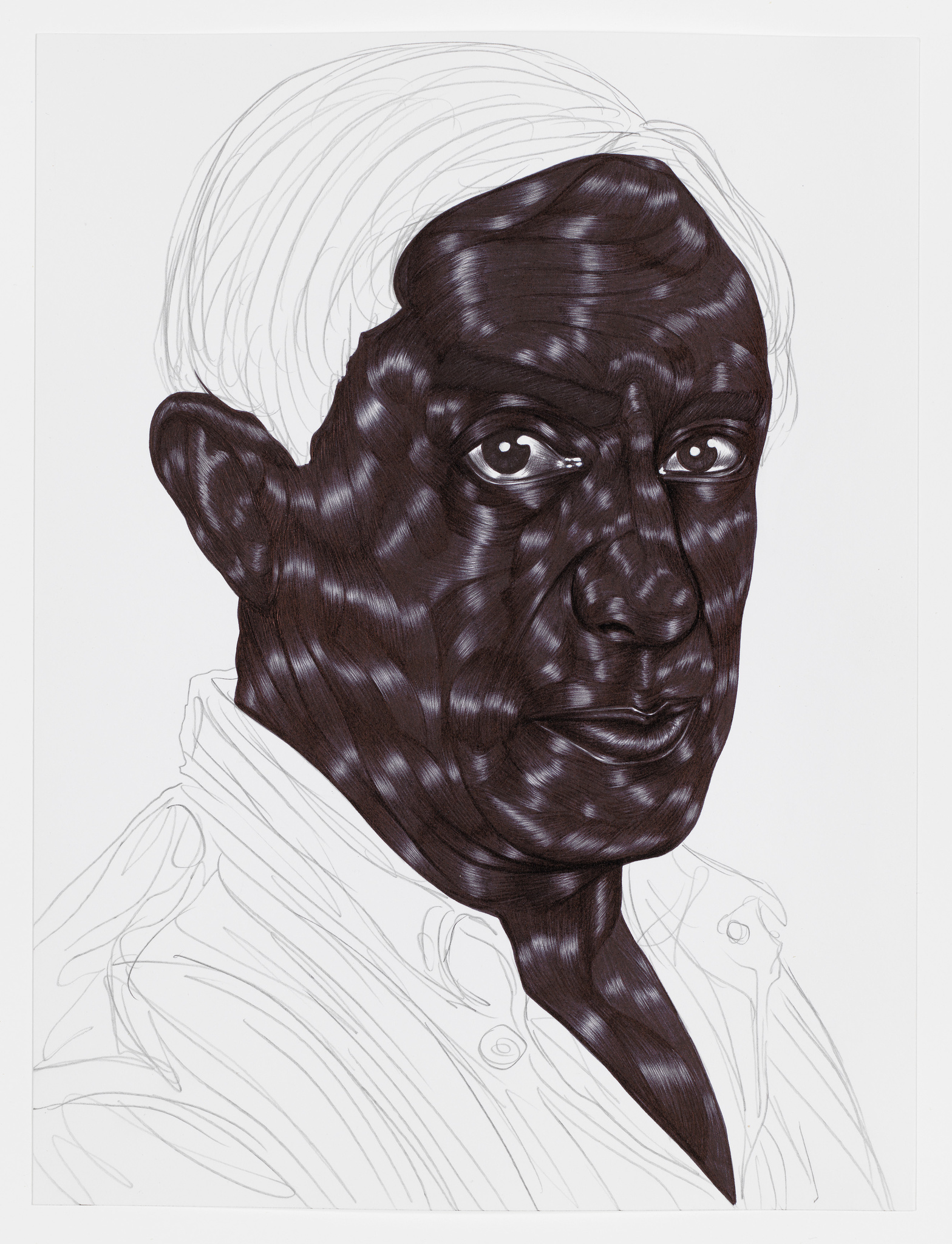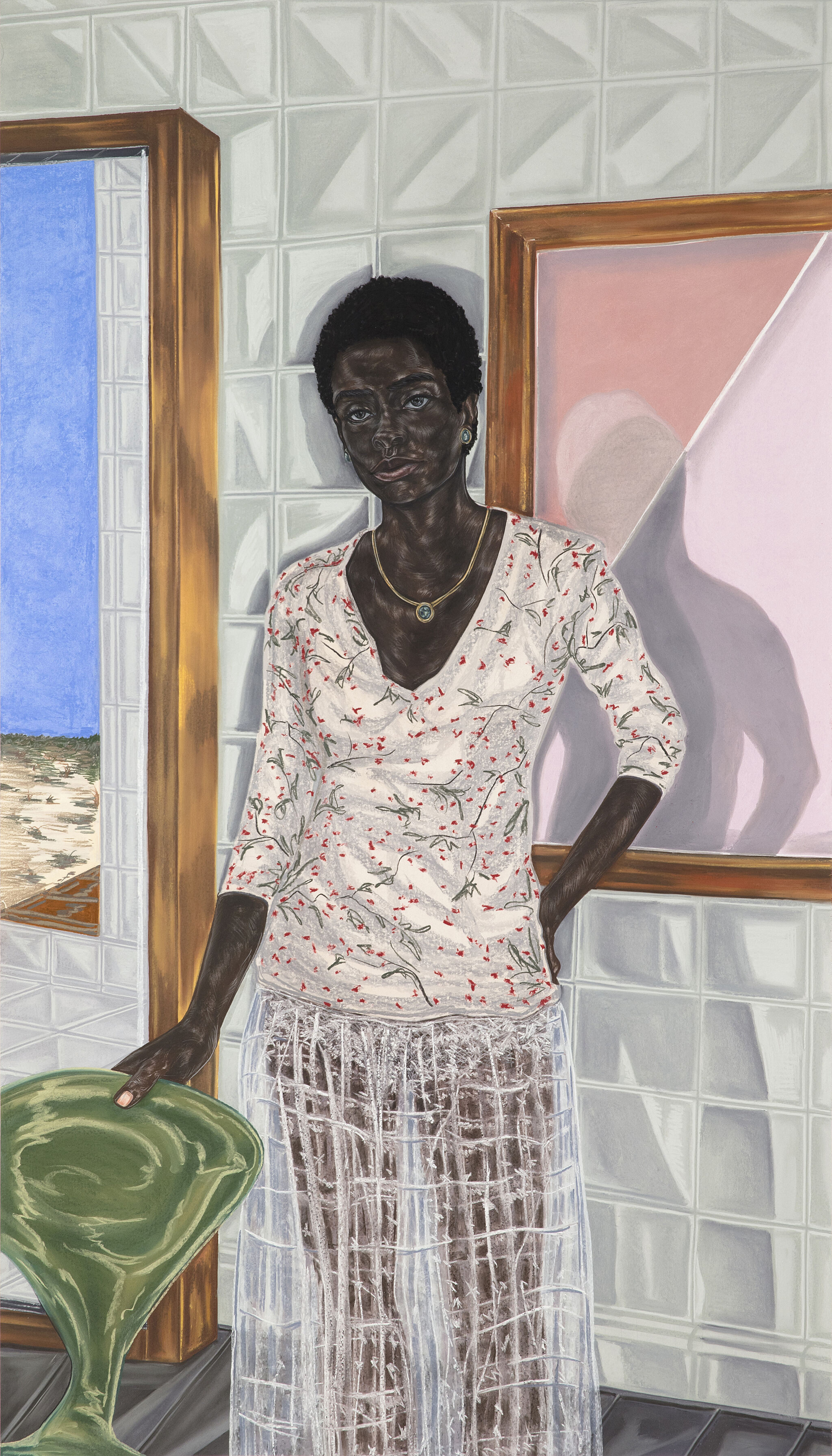Toyin Ojih Odutola
Oct 25, 2017
0:00
Toyin Ojih Odutola
0:00
Toyin Ojih Odutola: I am Toyin Ojih Odutola.
To Wander Determined is the combination of two chapters in a fictionalized story I've been developing over the past year. It started out with a series, I call it chapter one, where it was called A Matter of Fact and it was about this wealthy family called the UmuEze Amara. They're an Igbo, landed-gentry family that live in Lagos and Southeastern Nigeria. It was an opportunity for me to explore wealth through the lens of color and race, to see how we can move a very contested history of Black bodies being capital to Black bodies owning themselves and their selfhood and owning the spaces that they're in and what that would look like.
From that exploration, I transitioned into newer works that I've made this year and they're a separate family, but they're connected to the UmuEze Amara. They are the Obafemi, they’re Yoruba, and they are a minor aristocratic family and they, too, have a history with nobility but they are explorers. They're middle class. This was now about the question of not only wealth and owning one's wealth but owning the right to travel freely. Oftentimes in history, particularly in fine art history and the visual arts, you see Black bodies traveling in the purpose of servitude. They're not traveling for themselves. It's very rare to see that kind of depiction in art and so to have a family that not only are known to travel but want to and are adventurers and explorers in their own accord was really an exciting potential series for me.
That's where this next chapter started and so now To Wander Determined is the combination of the two, bringing in the wealth of the first chapter with the need or the wanting to travel and how both of those impetuses or desires can form a narrative about a family or two families.
The skin for me, that's where my career kind of started. The skin was an access point. I started drawing in this patterned style back in 2004 and all I wanted to do—not really thinking a lot about race but it became race—was this idea of “what does skin feel like?” when you're defined by something. I came to the U.S. when I was five years old from Nigeria and had no knowledge of American history and was crash-coursed into it.
And that was really problematic when you're a kid. So growing up I always questioned that, but then as I got older and I started getting into art I was like, "I just want to mess it, see what I can do with this material," skin as a material, and not just the socioeconomic aspect, which is very real and does inform my work. I always loved the potential for narrative in this so whenever I create the skin, it's sort of like a world, this idea of the multifaceted self, the layered self, and how we are so many selves in so many different ways but I'm creating a singular picture and so how do I get at that point with this picture and reveal the lie of the singular person?
The only way I could think about it was to break up the face and to break up the surface, and to make the surface feel mercurial, feel like it could be anything at any given time.


